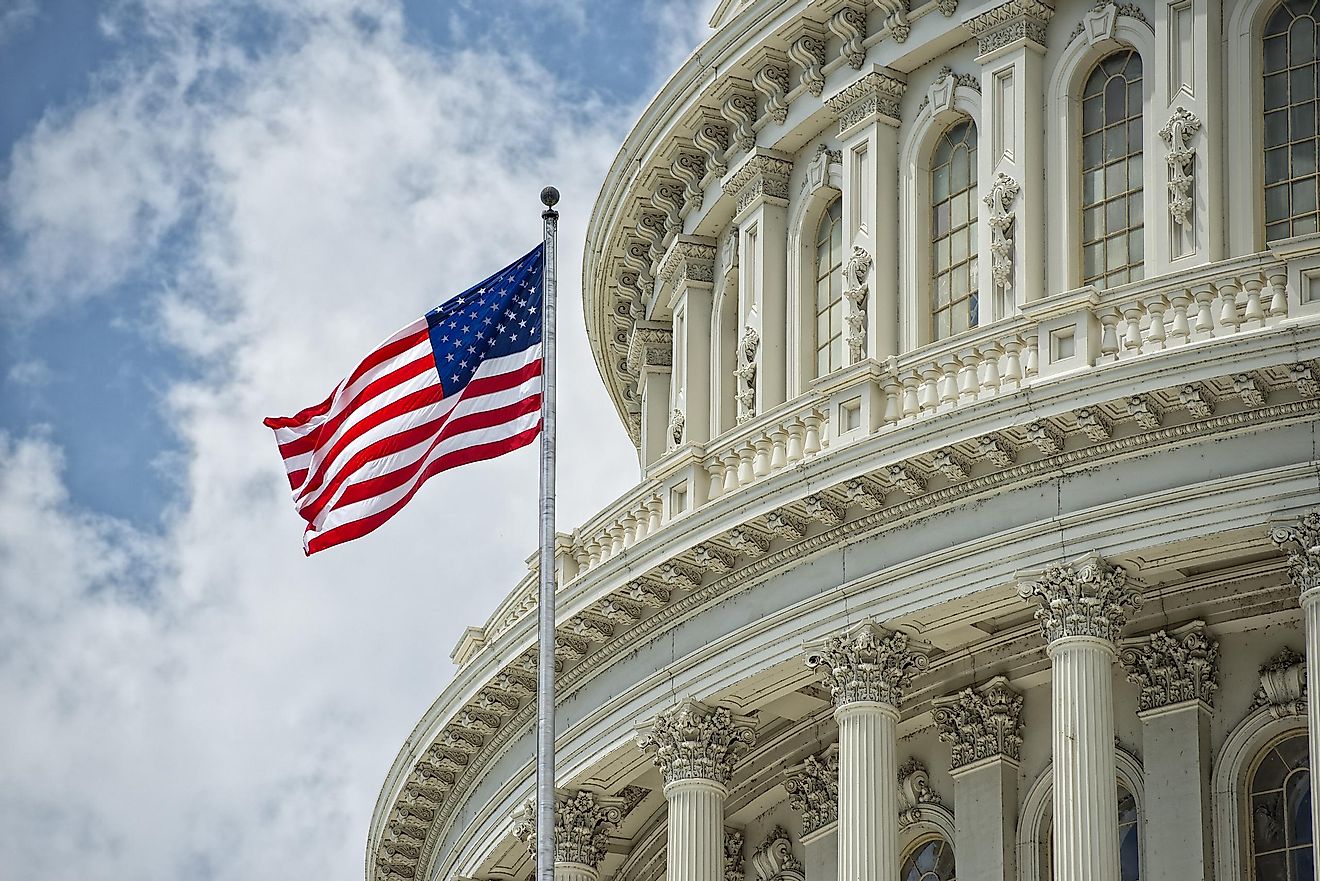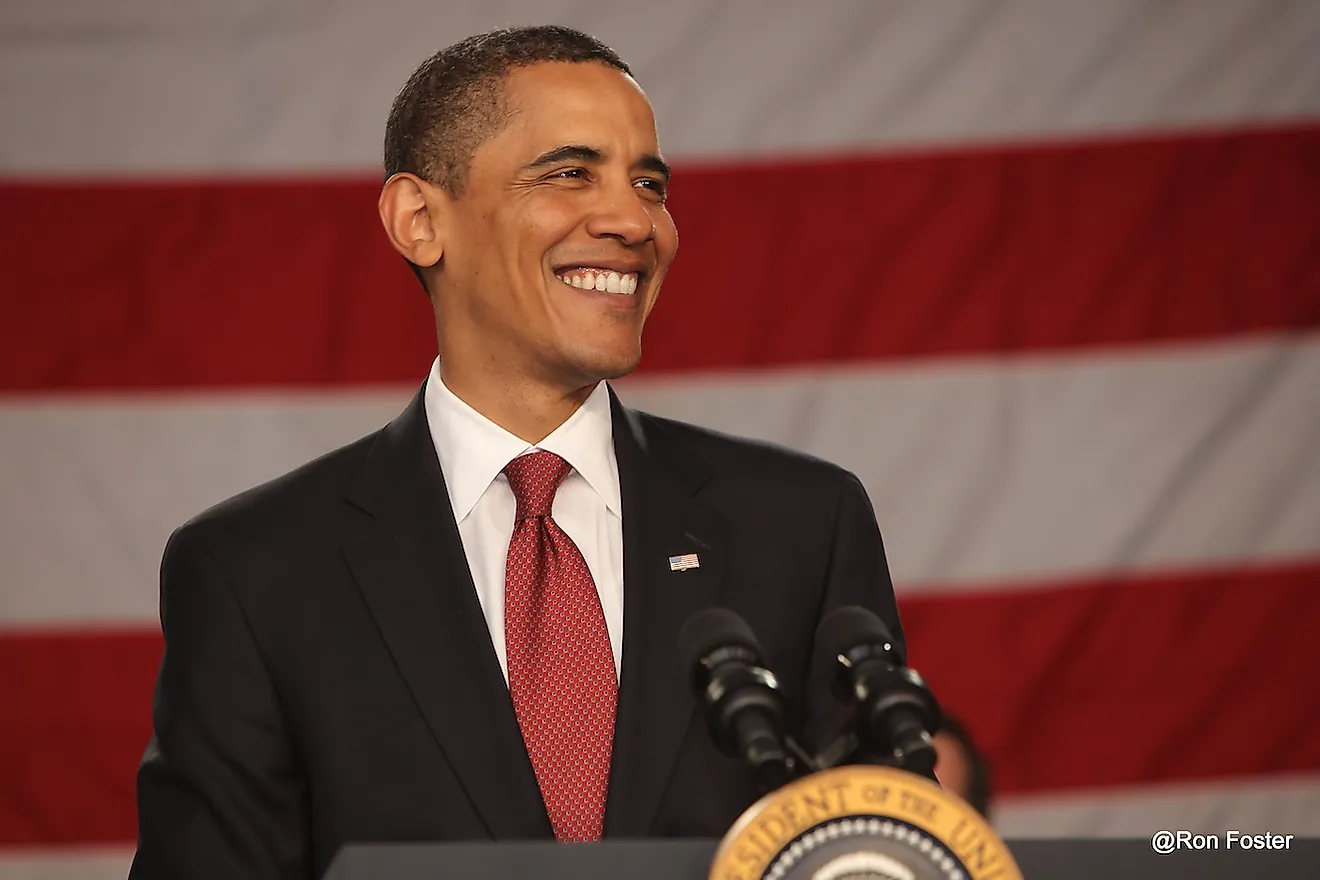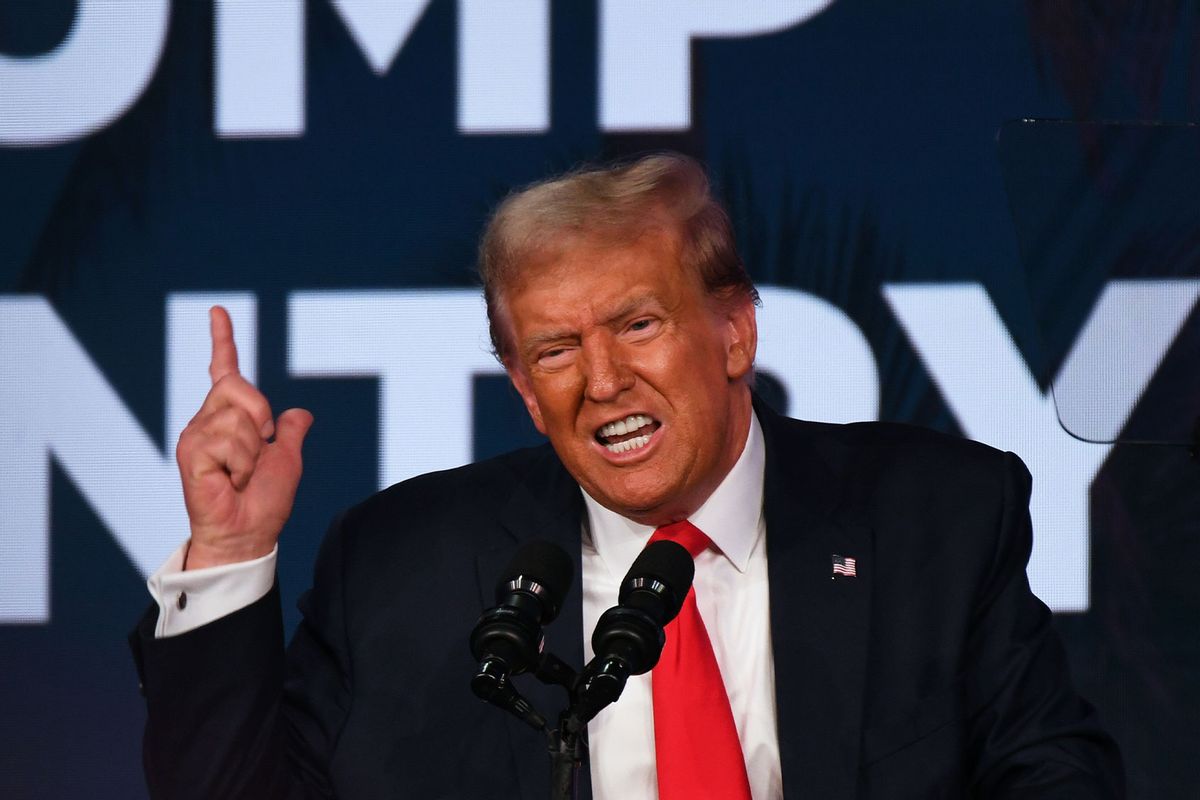Has Any US President Won All 50 States? Unpacking The Electoral Puzzle
Have you ever wondered about the biggest wins in American presidential history? It's a pretty common question, you know, especially when election season rolls around. People often ask, "Has any US president won all 50 states?" It feels like such a complete victory, doesn't it? That kind of widespread support would certainly be something to talk about, and it might seem like a natural goal for any candidate aiming for the highest office in the land.
When we look at the way our elections work, with all the different states and their unique voting patterns, it's actually a really interesting thought. The idea of one person capturing every single state, from coast to coast, is a rather powerful image. It makes you think about what it would take for a candidate to appeal to such a diverse group of people across the entire country, a bit like trying to please everyone at a huge family gathering.
So, we're going to explore this very question today. We'll look at the historical records, consider the mechanics of our election system, and talk about why achieving such a sweeping victory is, well, quite a challenge. It's a topic that sheds light on the very nature of American politics, and how different parts of the nation think about their leaders.
Table of Contents
- The Big Question, Answered
- Why a 50-State Sweep Is So Hard
- The Closest Anyone Has Come
- What Would It Take?
- Frequently Asked Questions
The Big Question, Answered
To get right to it, the straightforward answer is no, no US president has ever won all 50 states in a presidential election. It's a rather fascinating piece of political trivia, and it truly speaks to the complexity and diversity of the American voting public. You see, even in what we might call "landslide" victories, there has always been at least one state, or sometimes even the District of Columbia, that voted for the other side.
It's almost like a perfect game in baseball; you know it's theoretically possible, but it happens so rarely, if ever, that it becomes a legendary feat. The closest any candidate has gotten still leaves a state or two out, which is pretty telling about the nature of our country's political leanings. This fact, in a way, highlights the enduring strength of differing viewpoints across the nation.
When you consider the sheer scale of the United States, with its vast geography and varied populations, it starts to make a lot of sense why this has never happened. Each state, after all, has its own political identity, its own local issues, and its own historical voting patterns, which are very deeply ingrained. So, winning every single one is, well, a pretty tall order.
Why a 50-State Sweep Is So Hard
There are many reasons why a clean sweep of all 50 states remains an elusive goal for presidential candidates. It's not just about getting more votes; it's about the very structure of our electoral system and the deeply held beliefs of people across the country. This makes it, you know, a very interesting puzzle to consider.
The Electoral College System
The Electoral College is, in a way, the biggest hurdle. Instead of a national popular vote deciding the presidency, we have a system where each state gets a certain number of electoral votes based on its population. To win, a candidate needs to secure at least 270 out of 538 total electoral votes. This means that a candidate can win the presidency without winning the popular vote, and it also means that some states get more attention than others.
Because of this system, campaigns tend to focus their resources and efforts on "swing states" or "battleground states," which are states that could go either way. They put a lot of time and money into convincing voters in these specific areas. This strategy, you know, often means that states seen as reliably "red" or "blue" receive less direct campaign attention from the opposing side, which makes flipping them incredibly difficult.
Winning a state means winning its electoral votes, and for a candidate to win all 50 states, they would have to achieve a popular vote majority in every single one. That's a very different challenge than simply winning the overall national popular vote. It means convincing a majority of people in places like Vermont and Texas, or California and Alabama, to all vote for the same person, which is a bit of a stretch.
Deep-Seated Political Loyalties
For many people, political affiliation is something that runs quite deep. It's often tied to family traditions, personal values, and community identity. Many states have a long history of leaning one way or another, and voters in those states tend to stick with their preferred party, you know, election after election. Changing these loyalties is incredibly tough for any candidate.
Even if a candidate is incredibly popular, there will always be a segment of the population in every state that, for various reasons, will simply not vote for them. This might be due to a strong belief in the opposing party's platform, a dislike of the candidate's specific policies, or even just a general resistance to change. So, there's always a baseline of opposition votes, no matter how appealing a candidate might seem.
It's like trying to get everyone to agree on the best type of ice cream; some people just really prefer vanilla, while others are absolutely set on chocolate. These preferences are often deeply personal and not easily swayed, which makes a universal consensus on a political candidate very, very hard to achieve. You can campaign all you want, but some minds are just made up.
Regional and Cultural Differences
The United States is a vast and incredibly diverse country. What matters to voters in a rural farming community in the Midwest might be very different from what matters to people living in a bustling city on the East Coast. These regional and cultural differences play a huge role in how people vote, and they shape the political landscape of each state.
Issues like economic policies, social values, environmental concerns, and foreign policy are viewed differently across various parts of the nation. A candidate who appeals strongly to one region might inadvertently alienate voters in another. It's a constant balancing act for any campaign, you know, trying to craft a message that resonates broadly without losing specific groups.
For example, a candidate's stance on energy might be very popular in a state with a strong oil industry but less so in a state focused on renewable energy. These kinds of fundamental differences mean that a candidate almost always has to make choices that appeal to some groups more than others, making a truly universal appeal, well, nearly impossible. So, there are always trade-offs involved.
The Two-Party Structure
Our political system is largely dominated by two major parties: the Democrats and the Republicans. This two-party structure means that voters generally choose between one of two main options, and third-party candidates rarely gain enough traction to win electoral votes. This further entrenches the existing political divisions across states.
Most states lean either Republican or Democrat, sometimes very strongly. For a candidate to win all 50 states, they would need to somehow overcome these established party lines in every single one, which is an enormous undertaking. It means convincing lifelong Republicans to vote Democrat, and lifelong Democrats to vote Republican, all at the same time. That, you know, is a very big ask.
The very nature of partisan politics means that a significant portion of the electorate will always support their party's nominee, regardless of who the individual candidate is. This built-in opposition, which is pretty much guaranteed in every state, makes a 50-state sweep a practical impossibility under our current system. It's like a constant tug-of-war, with both sides always pulling hard.
The Closest Anyone Has Come
While no one has achieved the perfect 50-state sweep, a couple of presidents have come remarkably close, winning 49 out of 50 states. These instances are often cited as the most significant landslide victories in modern American history, and they truly show what widespread appeal looks like. It's a rather impressive achievement, even if it falls just short of the absolute maximum.
Richard Nixon in 1972
In 1972, President Richard Nixon, running for re-election, achieved what many consider to be one of the most dominant victories in US presidential history. He won 49 out of the 50 states, securing a massive 520 electoral votes. His opponent, George McGovern, only managed to win Massachusetts and the District of Columbia.
Nixon's victory was a testament to his broad appeal at the time, even amidst the backdrop of the Vietnam War and the unfolding Watergate scandal, which would later consume his presidency. His campaign focused on themes of "peace with honor" and a strong economy, resonating with a wide range of voters. So, it was a very strong showing, indeed.
It's worth noting that even with such a commanding performance, he couldn't quite get that last state. Massachusetts, a traditionally liberal state, remained firmly in the Democratic column, along with the District of Columbia, which consistently votes for the Democratic candidate. This just goes to show how difficult it is to achieve complete consensus across the board, you know, even in a landslide.
Ronald Reagan in 1984
Twelve years later, in 1984, President Ronald Reagan, also seeking re-election, mirrored Nixon's impressive feat. Reagan won 49 states, earning 525 electoral votes. His opponent, Walter Mondale, only managed to win his home state of Minnesota and the District of Columbia. This was another truly overwhelming victory, showing very widespread support.
Reagan's campaign centered on themes of American optimism, economic recovery, and a strong national defense. His charismatic personality and clear vision for the country resonated deeply with voters across various demographics. He was, you know, a very popular figure at that time, and his message really connected with many people.
Like Nixon, even with such a powerful mandate, Reagan couldn't capture every single state. Minnesota, Mondale's home state, stuck with its native son, and the District of Columbia, as usual, voted for the Democratic candidate. These two examples, really, highlight the deep-seated political divisions that make a full sweep so challenging, even for the most popular presidents.
What Would It Take?
For a president to win all 50 states, it would require a political alignment that has never before been seen in American history. It would mean overcoming decades of partisan divisions, regional loyalties, and diverse voter interests. The candidate would need to appeal to literally every segment of the population, which is, you know, an incredibly tall order.
Perhaps a national crisis of unprecedented scale, where the entire country rallies behind a single leader, might create such a scenario. Or maybe a candidate with such universal appeal and a platform so broadly accepted that it transcends traditional party lines. But even then, it's hard to imagine every single voter, in every single state, agreeing on one person. It's a pretty big ask, to be honest.
The fact that no one has achieved this feat since the United States expanded to 50 states really speaks volumes about the nature of our democracy. It shows that even in moments of great unity, our nation maintains its diverse political viewpoints and regional identities. This, in a way, is a sign of a healthy, vibrant democracy, where different voices are always present and heard. You can learn more about electoral processes on our site, and also find out about historical election results.
Frequently Asked Questions
Here are some common questions people ask about presidential election outcomes:
Q: Which president won the most electoral votes?
A: Ronald Reagan, in 1984, won the most electoral votes with 525 out of 538. Richard Nixon, in 1972, won 520 electoral votes. These were truly massive victories, you know, in terms of electoral count.
Q: Has any president won the popular vote in all 50 states?
A: No, absolutely not. Winning the popular vote in all 50 states is an even more difficult achievement than winning their electoral votes, and it has never happened. It would mean a majority of individual voters in every single state chose the same candidate, which is, you know, pretty much unheard of given our political landscape.
Q: Why is the District of Columbia often mentioned separately in election results?
A: The District of Columbia, or D.C., is not a state but gets three electoral votes in presidential elections. It consistently votes for the Democratic candidate by a very large margin, so it's almost always the one place that doesn't go for a Republican in a landslide. It's a very reliable Democratic stronghold, you know, election after election.
The idea of a president winning all 50 states is a captivating one, isn't it? It captures the imagination, suggesting a level of national unity that seems almost mythical in our politically diverse country. The reality, as we've seen, is that the very structure of our electoral system, combined with the deeply rooted political preferences and regional differences across the United States, makes such a complete sweep an incredibly improbable event. Even the most popular presidents have found it impossible to achieve universal support across every single state. This ongoing pattern, you know, really highlights the rich tapestry of American democracy, where a multitude of voices and perspectives always find their place.

Who Were The US Presidents That Won All 50 States? - WorldAtlas

Who Were The US Presidents That Won All 50 States? - WorldAtlas

Trump claims he won all 50 states in the 2020 election | Salon.com